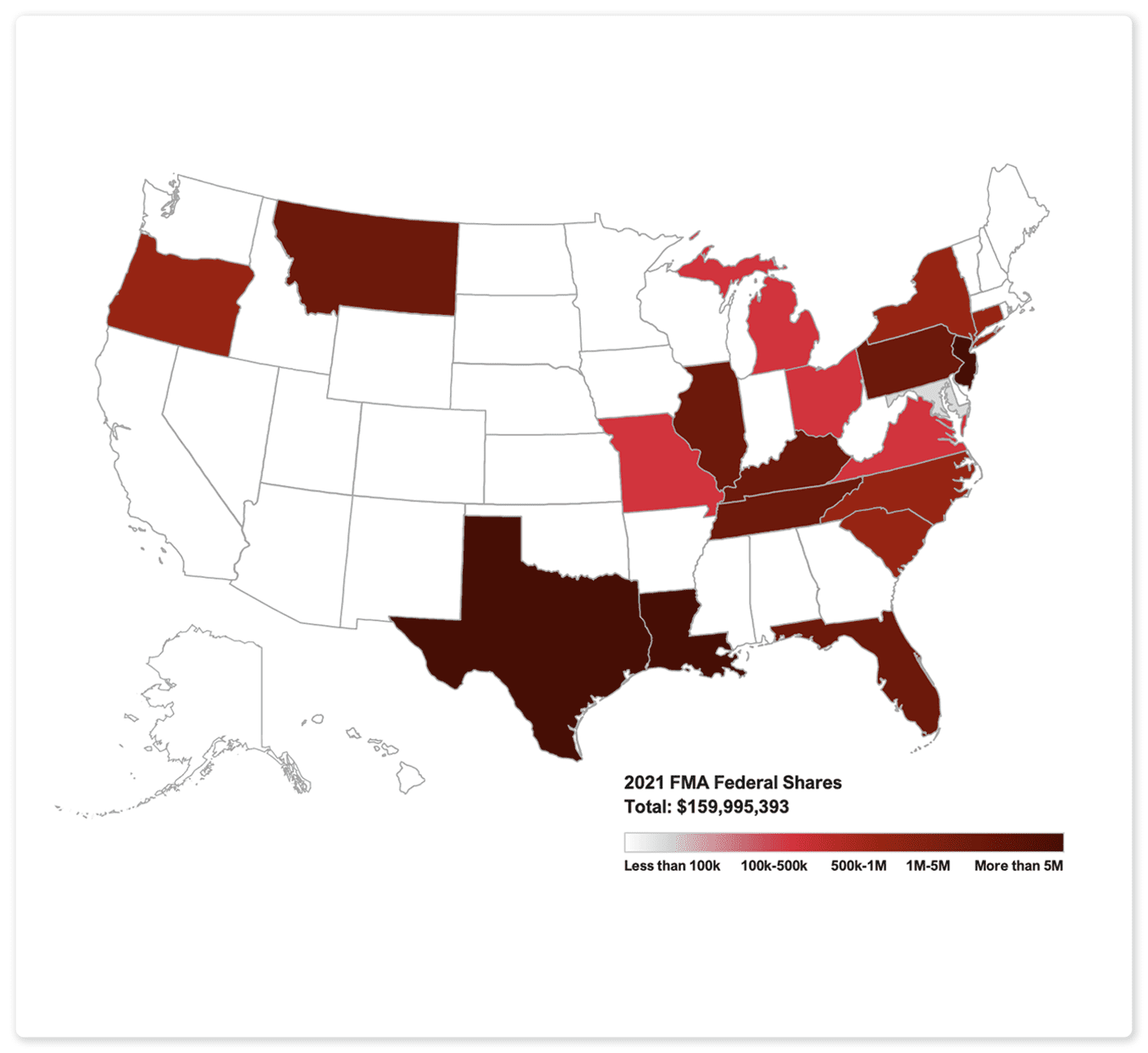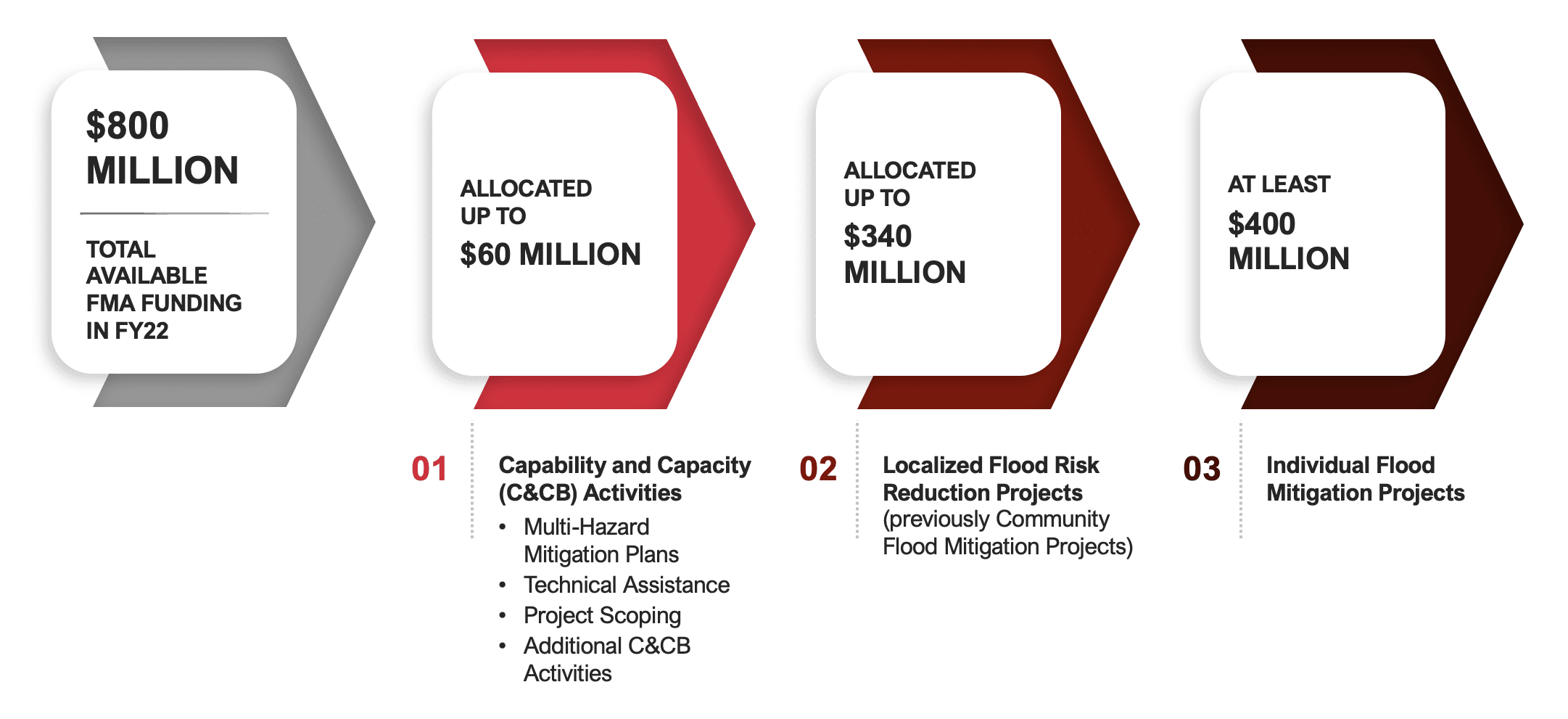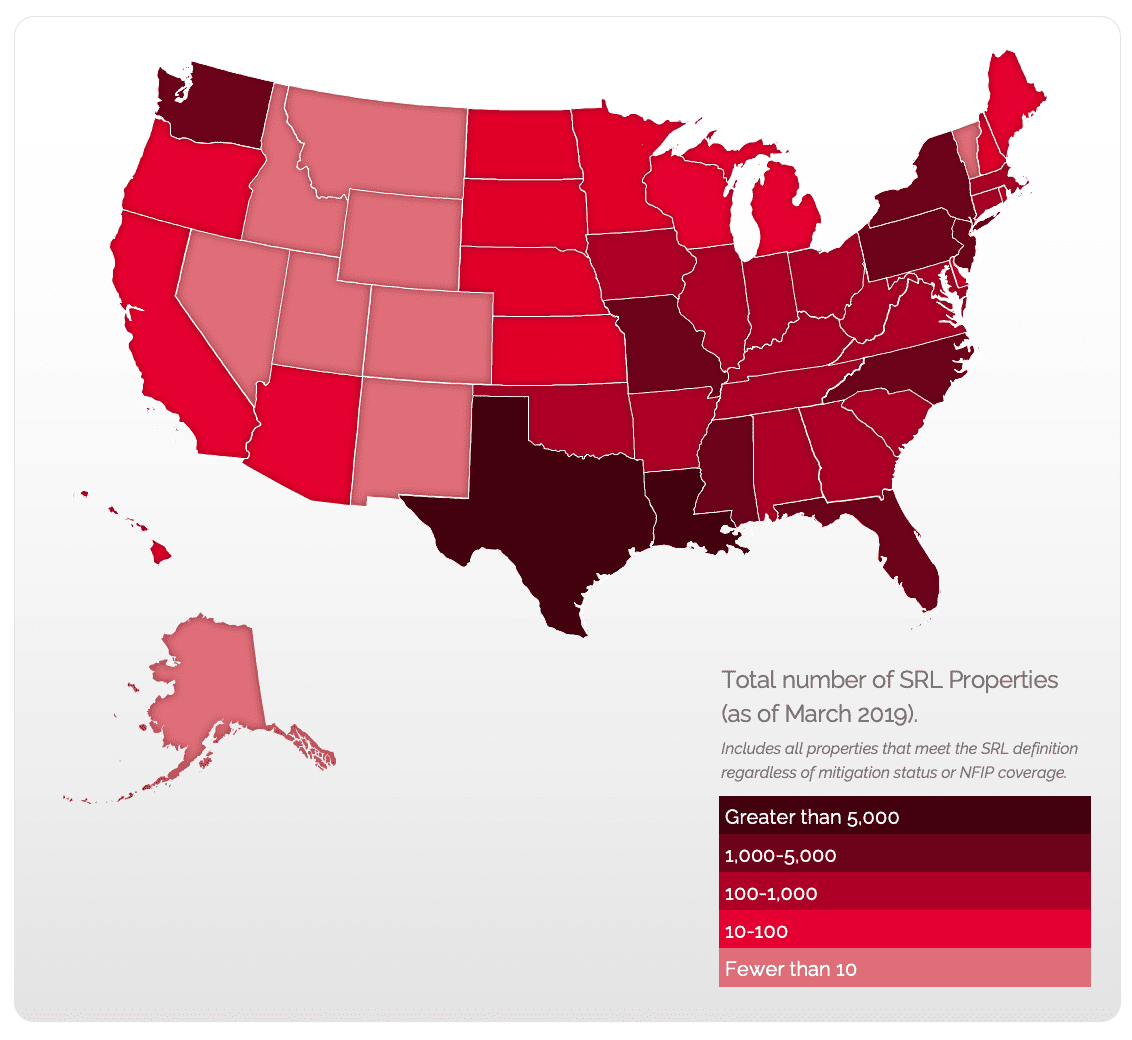On August 12, 2022, the Federal Emergency Management Agency (FEMA) released the Fiscal Year (FY) 2022 Flood Mitigation Assistance (FMA) Notice of Funding Opportunity (NOFO). The most striking component is the significant and unprecedented investment in the Flood Mitigation Assistance (FMA) program – a 5 times greater investment than the previous year. FY 2021 offered eligible applicants and subapplicants $160 million for FMA funding. This year, FY 2022, offers $800 million in assistance to reduce or eliminate the risk of repetitive flood damaging to structures insured under the National Flood Insurance Program (NFIP). The boost in funding is made available to eligible applicants (States) and subapplicants (local governments) from the Infrastructure Investment and Jobs Act (IIJA).
FMA Funding Priorities
The $800 million dollar investment is divided among three strategic funding priorities.
Capability and Capacity Building (C&CB)
This $60 million assists eligible entities to plan and scope flood related mitigation interventions and improve the administration of the FMA program. C&CB activities can be the seed funding for future flood mitigation projects. According to FEMA, all subapplications under C&CB must demonstrate that the activity will reduce flood claims against the NFIP. More information on the C&CB scoring criteria is found on page 30 of the FMA NOFO.
Localized Flood Risk Reduction Projects
The second priority is localized flood risk reduction projects – previously known as community flood mitigation projects. These are the larger scale flood mitigation projects that seek to address community wide flood control issues. The funding for this priority was limited to $70 million last year, but with further investment at $340 million, it provides a greater opportunity for NFIP-insured communities to address stormwater management, floodplain restoration, and floodwater storage and diversion.
To be competitive for this FMA priority, applicants and subapplicants should address as many criteria as possible in the localized flood risk reduction project scoring criteria (page 32 of the FMA NOFO). Key scoring aspects include NFIP policy holder status, CDC Social Vulnerability Index (SVI) score, climate change/ future conditions, nature-based solutions, severe repetitive loss (SRL)/ repetitive loss (RL) properties, and a private partnership investment. The max project under this priority is $50 million (increased from $30 million).
Individual Flood Mitigation Projects
The last priority is individual flood mitigation projects. This $400 million priority utilizes a separate scoring criteria (page 36 of the FMA NOFO). This priority typically includes elevation and acquisition projects for NFIP properties in the Special Flood Hazard Area (SFHA). Key aspects to a competitive subapplication include substantial damage determinations, the CDC SVI score, SRL and RL properties, and implementation measures.
Equity and Climate Change
The FMA program is prioritizing assistance that benefits disadvantaged communities. The program utilizes the CDC SVI tool. Using the tool, a disadvantaged community (SVI score of not less than 0.6) will be prioritized in the scoring criterion for C&CB, localized flood, and individual flood projects. In addition, FMA prioritizes the enhancement of climate resilience and environmentally friendly construction practices. The scoring rubrics favorite activities that include nature-based solutions, climate adaptation, and future conditions.
Increasing Access, Investing in Our Future
The FMA program is an annual, competitive flood mitigation program that seeks to lessen the damage to NFIP properties with a focus on RL and SRL structures. Which applicants and subapplicants can be competitive for FMA largely depends on geography, as these properties are significantly higher in certain areas of the United States.
FEMA is challenged to consider if the dollars are truly reaching the most vulnerable communities and how the additional funding will ultimately reduce their risk. The highest priorities for FEMA should be streamlining and improving the program, continuing to add benefit for disadvantaged communities, as well as an enhanced focus on climate adaptive projects. If these priorities are truly addressed, FEMA may see a more equitable FMA program that flourishes in benefit of disadvantaged, flood-prone communities nationwide.
Total Number of SRL Properties by State (as of March 2019)
FMA Federal Share Awarded by State (2021)

With the unprecedented funding in FMA this year, an amount that actually surpassed all the subapplications received in 2021 (25 States submitted 194 subapplications requesting $534 million), we should be able to make a substantial impact in reducing the number of homes, businesses, and structures severely impacted by storms year after year – in hopes of one day, not having any RL or SRL properties in the country.
Amelia Muccio is the Director of Mitigation at Hagerty Consulting and a subject matter expert in disaster recovery. With over 15 years of experience in public health, disaster preparedness, mitigation, and financial recovery, Amelia has helped clients obtain $5 billion in federal funds after major disasters, including Hurricane Sandy, the California Wildfires, and Hurricane Harvey.
Want to know more about FEMA mitigation programs?
Please fill out the form below and one of our mitigation experts will be in touch!

